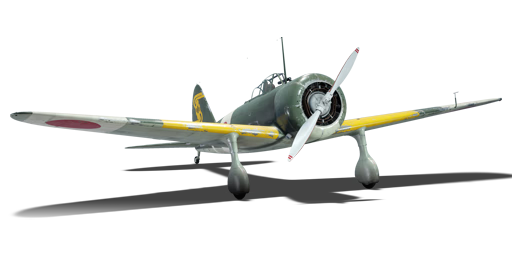

Aviation
Ki-27 Otsu Tachiarai
I
Rank
AB
1.3
RB
2.0
SB
1.3
Battle rating
Japan
Research country
Fighter
Main role
250

Purchase

Premium vehicle
Status
General information
The Ki-27 otsu is of the 4th Sentai based in the Japanese Tachiarai Air Base, located in Fukuoka, Kyūshū. Established in 1919 and in 1940 as an Army Flight School, it trained all new Army pilots to be ready for aerial combat over the skies of Asia.
The Ki-27 otsu (4th Sentai) was introduced in Update "Starfighters". Serving as a very good example of what to expect from the Japanese air tree, the Ki-27 excels in manoeuvrability above all else, having average survivability with lacklustre firepower.
Camouflages
Flight performance
Max speed
at 3,500 m
495464517476 km/h
Rate of Climb
12.88.618.48.6 m/s
Turn time
1010.99.510.5 s
Max altitude
8,500 m
Takeoff Run
180 m
Landing
flaps
flaps
Take-off
flaps
flaps
Combat
flaps
flaps
Air
brake
brake
Gear
control
control
General characteristics
Crew
1 person
Engine
Length
7.5 m
Wingspan
11.3 m
Wing Loading
83 kg/m²
Weight:
Base weight
1.31.341.271.33 t
Fuel in main tanks
0.24 t (1h 30m)
Limits:
Max Speed Limit (IAS)
554 km/h
Mach Number Limit
0.55 M
G limit
≈ -7/11 G
Flap Speed Limit (IAS)
220 km/h
Offensive armament
2 × 7.7 mm Type 89 machine gun
Ammunition
1,000 rounds
Fire rate
1,100 shots/min
One-second Burst Mass
0.19 kg
| Belt | Belt filling | Armor penetration (mm) at a distance: | |||||
|---|---|---|---|---|---|---|---|
| 10 m | 100 m | 500 m | 1000 m | 1500 m | 2000 m | ||
| T/AP/IAI/AP/I | 13 | 12 | 7 | 3 | 2 | 0 | |
| T/AP/IAI/AP | 13 | 12 | 7 | 3 | 2 | 0 | |
| T/T/T/AP | 13 | 12 | 7 | 3 | 2 | 0 | |
| I/AP/AP/AP/IAI | 13 | 12 | 7 | 3 | 2 | 0 | |
Economy
Repair cost
AB
431 

RB
222 

SB
193 

Crew training
450 

Experts
3,000 

Aces
45 

Research Aces
220,000 

Reward multiplier
AB / RB / SB
 2 x (20 / 30 / 100) %
2 x (20 / 30 / 100) % 
 2 x 100 %
2 x 100 % 

Premium vehicle
All modifications are unlocked
Flight performance | |
|---|---|
Survivability |
|---|
Weaponry |
|---|
Rating by players
You must play more than 3 battles for the last week and more than 10 battles in a vehicle to rate it.
Like:
9
Flight performance:
Not enough ratings
Survivability:
Not enough ratings
Aerial combat:
Not enough ratings
Ground attack:
Not enough ratings
Balance:
Not enough ratings
Tips & Tricks
This space is currently empty
Do you know any interesting vehicle features?
Loading...
No articles about this vehicle yet
Become the first author and get rewards!
Write a guide, tell about interesting historical facts, make a tutorial or simply an interesting post.
No more content